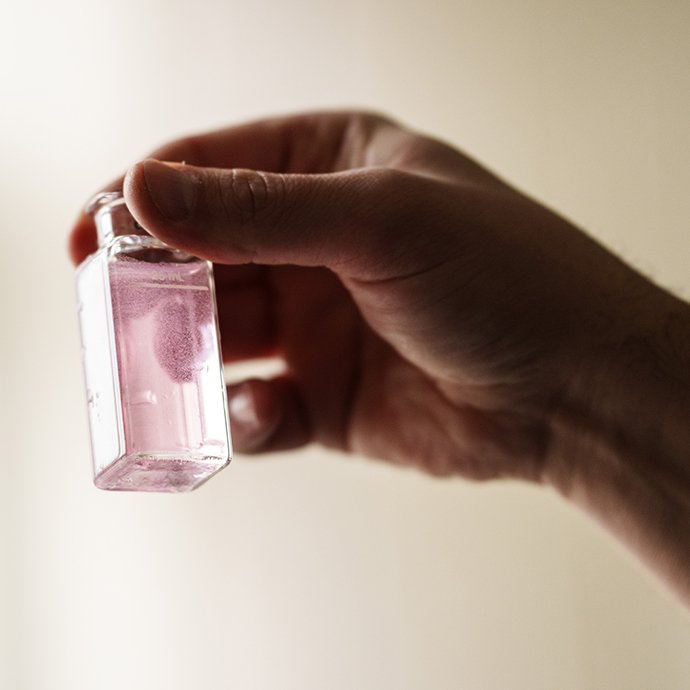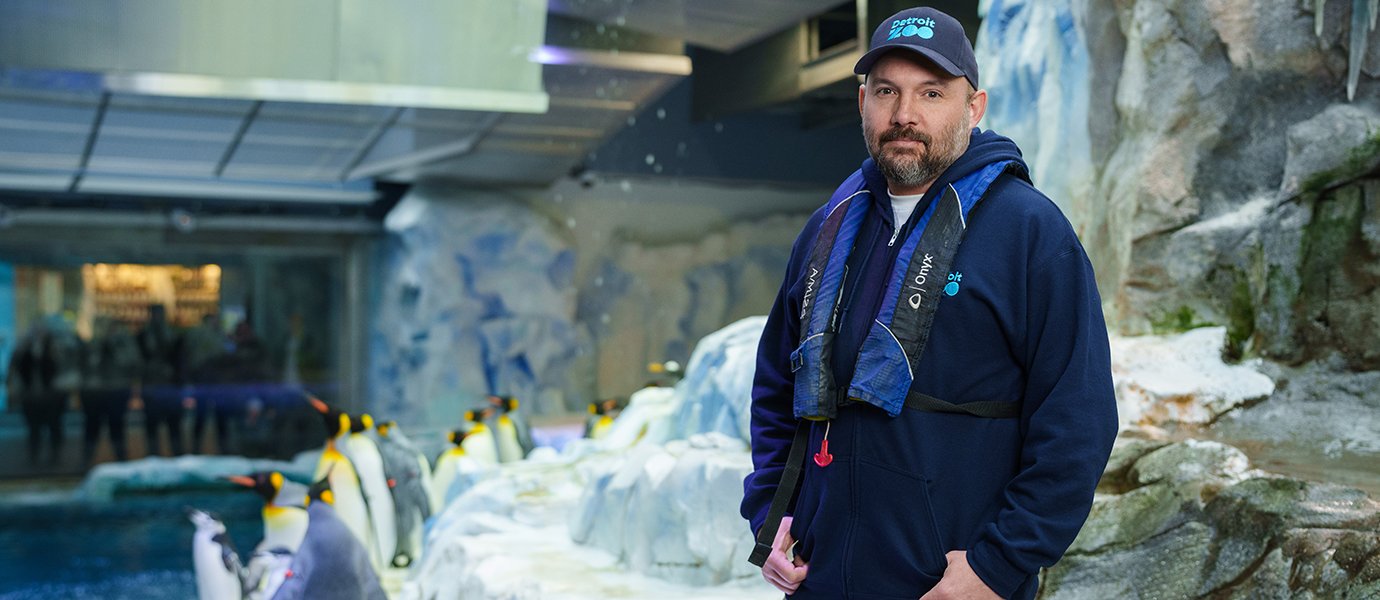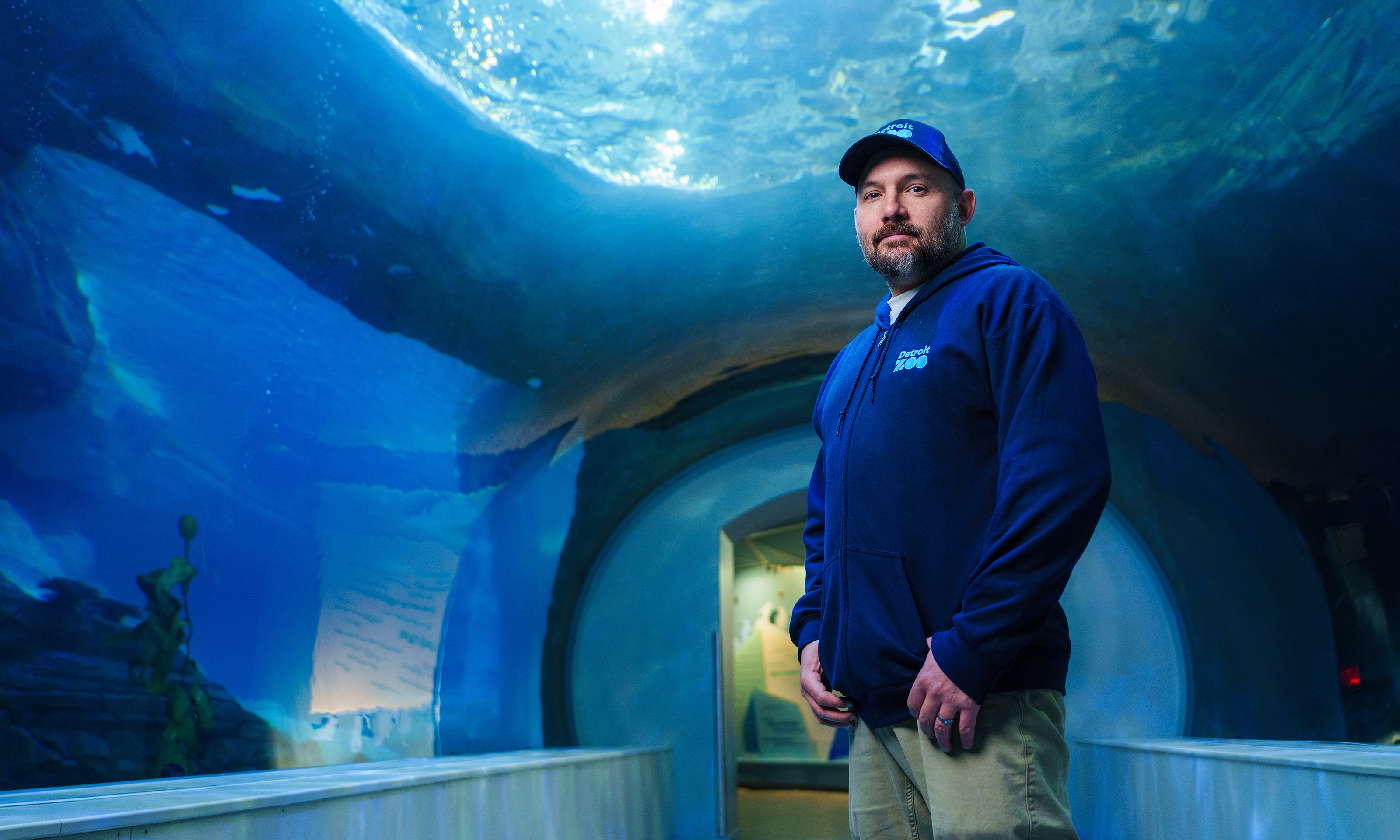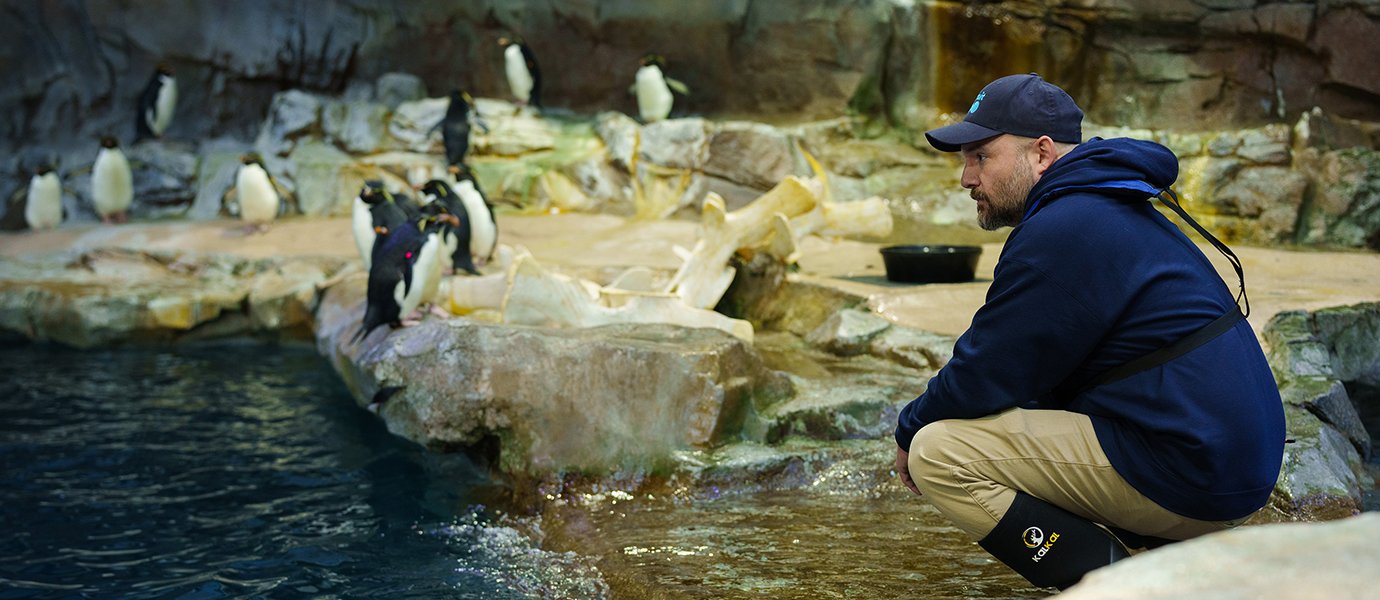Water cascades down a stream for otters to play in. It splashes over massive rocks covered in ice welcoming a dive from a penguin. It encircles a tunnel that refracts radiant blues beneath a polar bear.
Ryan Nirganakis, CAS ’13, knows all too well the importance of the quality and health of the water at the Detroit Zoo. As an aquatic life support technician, he is equipped with the task of ensuring that the water inside the enclosures are as close to the animals’ natural habitats as possible.
 |
| As an aquatic life support technician at the Detroit Zoo, Ryan Nirganakis takes and tests water samples from the exhibits. |
“You're trying to match what they would have in the wild, and then also trying to balance that with keeping it nice and clear for the guest experience,” Nirganakis says. “But the main goal is just making sure the animals are thriving.”
As a child, Nirganakis had a lifelong love of nature and animals. But unsure of a career path and fueled by the events of 9/11, he entered the United States Marine Corps shortly after high school, spending four years outside of Michigan. Once out, Nirganakis was anxious to stay close to home for college, and looked to nearby Oakland University to help guide him.
Drawing from his love for nature, Nirganakis majored in biology in 2013, discovering an interest in aquatic habitat care. While trying to keep his job options open, Nirganakis still held onto the desire to stay close to his family and friends in Roseville. “I started applying to zoos and aquariums all over the country,” he says. “I interviewed for many and ended up turning down several offers since my hope was that I could stay in Michigan. And thankfully, within a year of graduating, I stumbled upon a job listing for the Detroit Zoo.”
“Getting hired by the zoo that I grew up going to — which is so close to home — I was thrilled,” Nirganakis says. “It was perfect timing. Perfect location. Perfect place. It just all kind of lined up.”
 |
For the past decade, Nirganakis has helped maintain the water quality for the aquatic animals at the Detroit Zoo. The main animal habitats he works with are polar bears, penguins, sea otters, river otters and beavers, along with a handful of smaller habitats. In order to keep the water for these habitats clean and as close to the animal’s natural habitat as possible, Nirganakis conducts weekly (and sometimes daily) water testing. “We have to make sure the water is clean, so we test for ammonia, phosphates and a handful of other parameters,” he says. “We do our own coliform testing, which is basically the test for E. coli in the water, and we do all that in house.” Once the samples are pulled, Nirganakis takes them to the zoo’s in-house lab for testing. If there is a problem, he works with the zoo staff to help fix and regulate the habitat’s water.
 |
| Ryan Nirganakis monitors the Detroit Zoo's water filtration systems, including its largest one in the Polk Penguin Conservation Center. |
Aside from water testing, Nirganakis also maintains the zoo’s large filtration systems. Each habitat is equipped with a filtration system, the largest being in the Polk Penguin Conservation Center, which holds 326,000 gallons of water. Each filtration system is unique to fit the needs of each of their habitats, so maintaining them can be complex.
“There’s a different methodology when taking care of each system, so while they can be similar in many ways, each of them have their own little quirks,” Nirganakis explains.
The task of maintaining these aquatic habitats is something most people don’t consider when visiting the zoo. But with 10 years of experience in the field, Nirganakis confesses, “I now look at it with that eye of knowing and appreciating what goes into it.”
Of all the habitats Nirganakis maintains, his favorite is the penguin exhibit. He was employed at the Detroit Zoo during the construction of the Polk Penguin Conservation Center, where he was able to first “get his feet wet” as an aquatic support technician. Now, he has the privilege of not only watching the facility support a thriving penguin population but also seeing the joy it brings to others.
“I love the Polk Penguin Conservation Center,” Nirganakis says. “The guest experience there is awesome. I like seeing people’s faces when they visit for the first or 100th time. It’s really a cool experience.”
More Like This: |


 April 2, 2025
April 2, 2025 By Kelli M. Warshefski
By Kelli M. Warshefski









